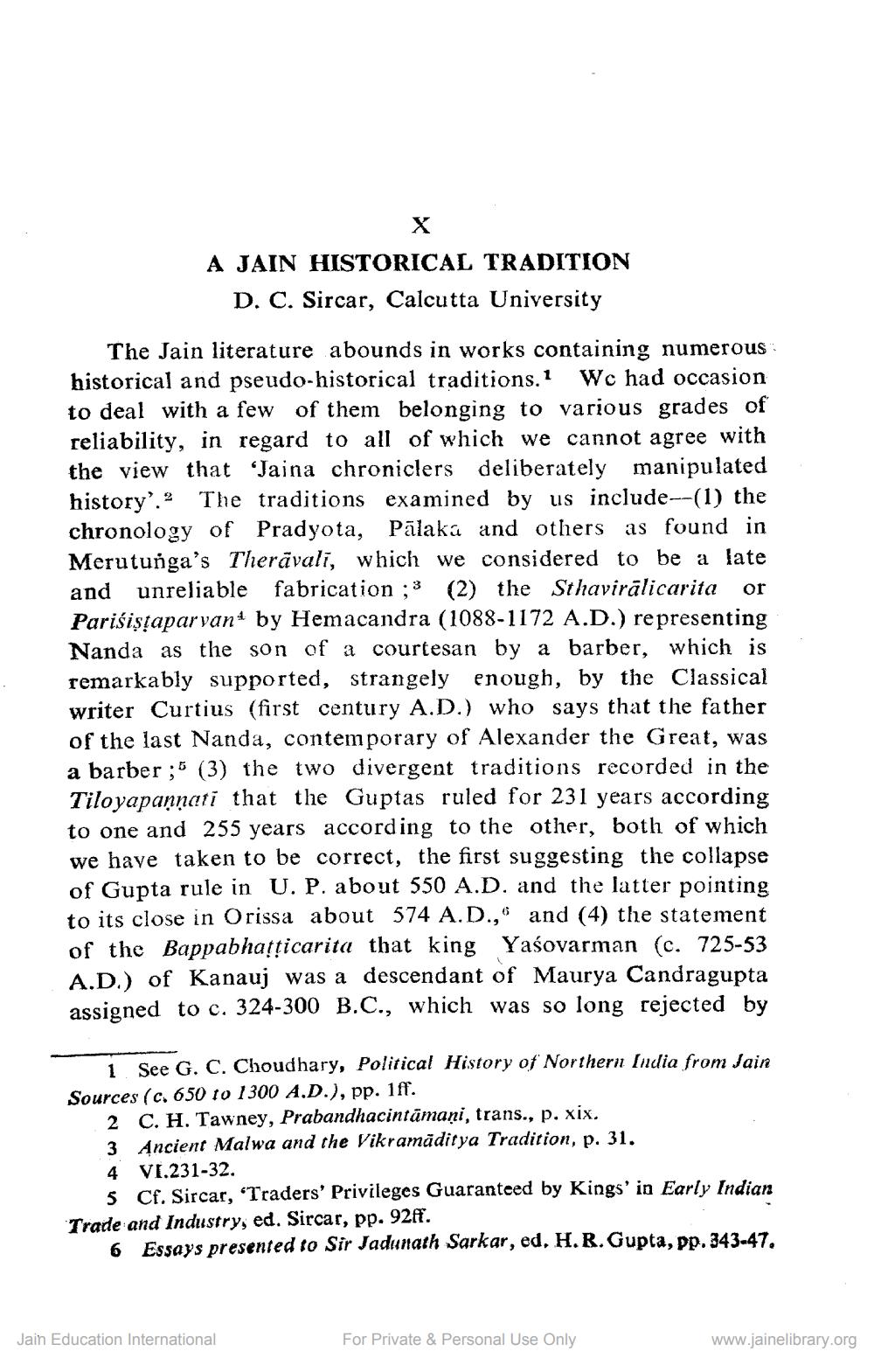________________
X
A JAIN HISTORICAL TRADITION
D. C. Sircar, Calcutta University
The Jain literature abounds in works containing numerous historical and pseudo-historical traditions. 1 We had occasion to deal with a few of them belonging to various grades of reliability, in regard to all of which we cannot agree with the view that 'Jaina chroniclers deliberately manipulated history'. The traditions examined by us include--(1) the chronology of Pradyota, Palaka and others as found in Merutunga's Theravali, which we considered to be a late and unreliable fabrication; (2) the Sthaviralicarita or Parisiṣṭaparvan by Hemacandra (1088-1172 A.D.) representing Nanda as the son of a courtesan by a barber, which is remarkably supported, strangely enough, by the Classical writer Curtius (first century A.D.) who says that the father of the last Nanda, contemporary of Alexander the Great, was a barber; (3) the two divergent traditions recorded in the Tiloyapanṇati that the Guptas ruled for 231 years according to one and 255 years according to the other, both of which we have taken to be correct, the first suggesting the collapse of Gupta rule in U. P. about 550 A.D. and the latter pointing to its close in Orissa about 574 A.D., and (4) the statement of the Bappabhaṭṭicarita that king Yasovarman (c. 725-53 A.D.) of Kanauj was a descendant of Maurya Candragupta assigned to c. 324-300 B.C., which was so long rejected by
1 See G. C. Choudhary, Political History of Northern India from Jain Sources (c. 650 to 1300 A.D.), pp. 1ff.
2 C. H. Tawney, Prabandhacintamani, trans., p. xix.
3 Ancient Malwa and the Vikramaditya Tradition, p. 31.
4 VI.231-32.
5 Cf. Sircar, 'Traders' Privileges Guaranteed by Kings' in Early Indian Trade and Industry, ed. Sircar, pp. 92ff.
6 Essays presented to Sir Jadunath Sarkar, ed. H. R. Gupta, pp. 343-47.
Jain Education International
For Private & Personal Use Only
www.jainelibrary.org




